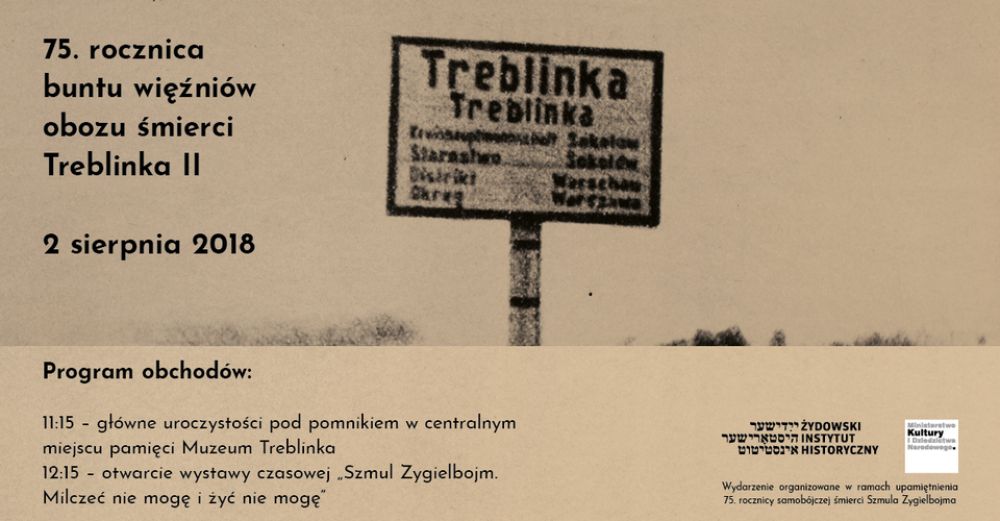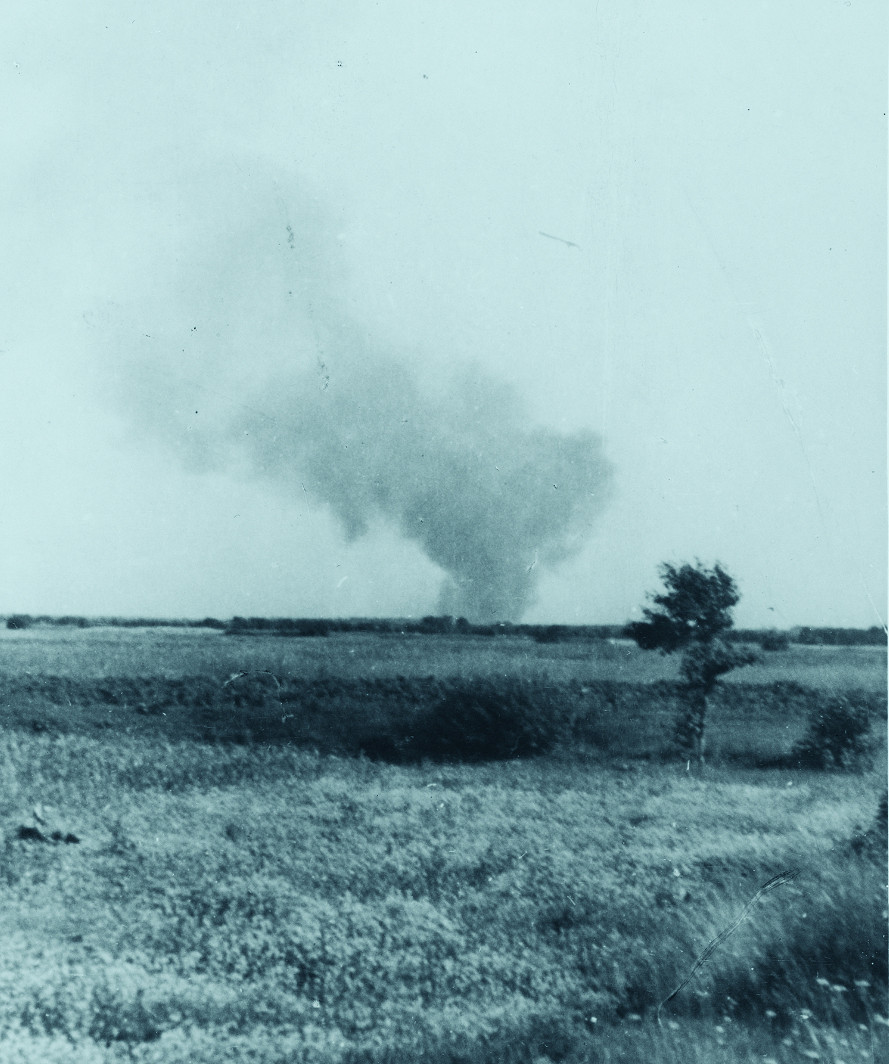- News
- Events
- Oneg Shabbat
- Collections
- Research
- Exhibitions
- Education
- Publishing Department
- Genealogy
- About the Institute
- Bookstore


On 2 August 1943, members of the Sonderkommando managed to begin an uprising in Treblinka. A signal to begin was an explosion of a grenade thrown onto the barrack for German guards and setting a fuel tank on fire. A pillar of fire rose near the garage – recalled Samuel Willenberg, prisoner of Treblinka. — German barracks were burning in a devilish dance. Dry pine branches woven into the fence burned like a snake pulling a fiery tail behind him. The entire Treblinka was on fire. Insurgents were armed with rifles taken away from the guards, axes and other tools which they used to work in the forest. Part of the camp buildings was set on fire; the prisoners didn’t manage to destroy the gas chambers and telephone lines.

From about 800 inmates present at the camp at that time, maximum 300 managed to escape through fences and barriers around the camp. Germans and Ukrainian support units immediately began the chase. Only about 70 prisoners managed to escape successfully and survive the war.
In 1943, the Germans, with an intent to destroy traces of their crimes, began to burn bodies previously buried in mass graves. The camp was liquidated in November 1943. all installations and buildings were removed, the area was plughed and covered with lupin.
It is estimated that since 23 July 1942, when the first transport with Jews from the Warsaw Ghetto arrived in Treblinka, about 900,000 victims were killed there until November next year.
We would like to invite you to the official commemoration of the 75th anniversary of the prisoners’ revolt in the Treblinka II extermination camp. The events will begin at the main monument, at 11:15.
11:15 – main commemoration at the main monument, in the central memorial place of the Museum of Struggle and Martyrdom in Treblinka
12:15 – opening of the temporary exhibition, „Shmuel Zygielbojm. I can neither be silent nor live”.
Last year, in cooperation with artist Michał Bojara, we have created a symbolic Ribbon of Remembrance at the location of the Treblinka extermination camp. It contains the names of people killed in Treblinka and identified so far. The installation is a part of the Book of Names project, developed by the Jewish Historical Institute along with the Memory of Treblinka Foundation.The aim of the project is to bring back the memory of hundreds of thousands of nameless victims of the largest cemetery of Polish Jews. One of the biggest posthumous achievements of the Nazis is the fact (…) that they had died in silence, we don’t know their names, their faces, we don’t know who they were. It’s unbelievable. This is why my obsession is to recover the names of those who died. We want to gather as much information as we can – names, surnames, age, address, profession – says Paweł Śpiewak, director of the Jewish Historical Institute. Since last year, 20,000 new names of people murdered in the camp have been identified.